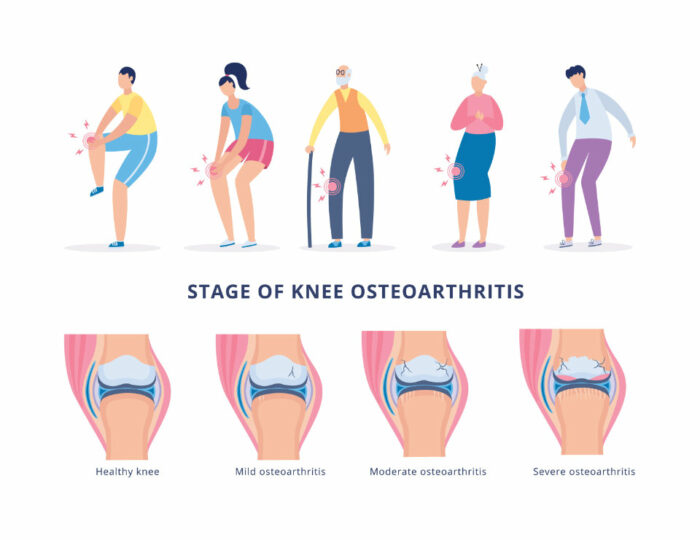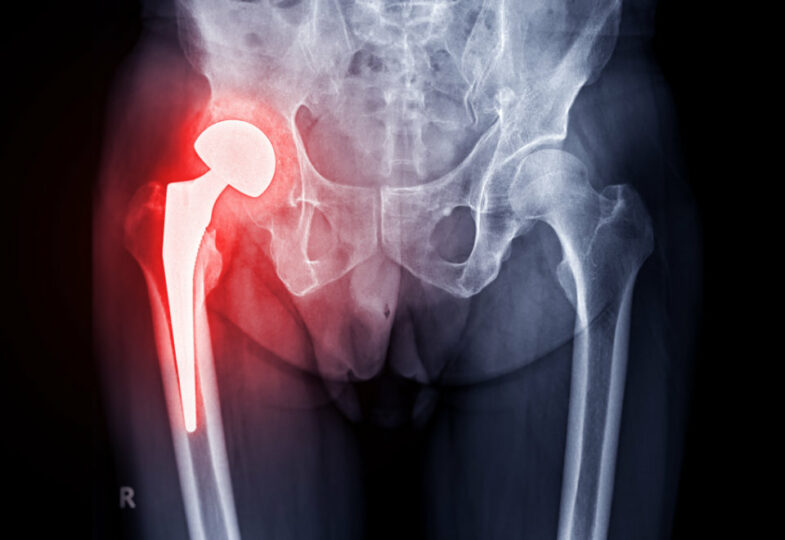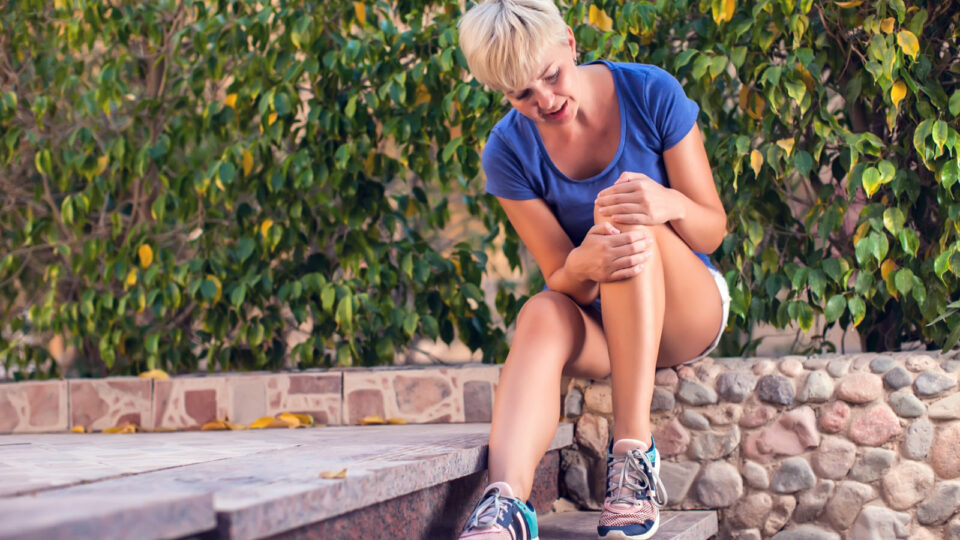Running can be a great way to improve your cardiovascular fitness, but you may be wondering if it has a negative impact on the health of your knees.
Contrary to popular belief, a recent study suggests that running does not increase the risk of developing osteoarthritis in the hips or knees.
The findings of the large survey of long-distance runners revealed no significant risk for knee or hip arthritis linked to running.
Regardless of the amount of running mileage, pace, age and length of time spent running, there was not an increased risk for developing knee or hip arthritis.
These results showed that even non-marathon runners could benefit from the same benefits in regards to joint health as those who have completed several marathons.
Here we’ll look at what running actually does to your knees as well as how to protect them while jogging or running.
What is Running and Its Benefits?
Running is an aerobic activity in which a person runs for sustained periods of time to improve their fitness. This type of exercise offers a wide range of benefits, such as improved cardiovascular health, stronger bones, and weight loss.
However, it is important to understand how running can affect the health of your knees, so that you can take steps to prevent injuries.
In fact, running is beneficial for knee and hip health – when done at a manageable intensity and frequency.
Is Running Really Bad for Your Knees?
The findings of various studies have brought the conclusion that running can support knee health, and maybe even help protect from the development of knee osteoarthritis.
It is thought that this comes from running strengthening the muscles and ligaments surrounding the knee joint.
As well as creating extra stability of the joints, many studies indicate runners tend to experience lower rates of osteoarthritis than sedentary people.
Furthermore, clinical research showed that exercise training was beneficial in reducing pain, stiffness, joint dysfunction, and muscular weakness associated with arthritis of the knee!
However, too much running or incorrect form when running can cause overuse injuries such as runner’s knee, patellar tendinitis, knee osteoarthritis or iliotibial band syndrome.
What is Knee Osteoarthritis?
Knee osteoarthritis, commonly referred to as OA knee, is a type of degenerative joint disorder where the articular cartilage in the knee deteriorates.
This cartilage acts like a cushion and lubricant between the bones in a joint, meaning when it wears away there is intense pain and stiffness.
To diagnose OA knee, medical history and X-rays are used, while blood and joint fluid tests may be needed in more severe cases to rule out other underlying illnesses.

Common Causes of Knee Osteoarthritis
Osteoarthritis of the knee (OA knee) is commonly found in individuals, caused by a few primary factors. These include:
- previous fracturing or trauma to the knee
- excessive wear and tear from high impact activities,
- aging
- being overweight
- having tight lower muscles or ones that are weak
- in some cases, it simply cannot be associated with any cause
Knee Osteoarthritis Symptoms
Knee osteoarthritis can cause a range of symptoms, including:
- gradually worsening pain or stiffness
- creaking sounds when the knee is moved
- bumps and nodules around the joint
- morning stiffness and swelling can also be present, especially after excess walking or standing
Knee Osteoarthritis Treatments
For people suffering from knee osteoarthritis, medication and physiotherapy are typically used to reduce the pain and improve range of motion.
Medications like NSAIDs can help to alleviate inflammation while physiotherapy exercises such as stretching and strengthening target the affected areas.
In cases where conservative management does not produce satisfactory results, surgery like injection, arthroscopic or total knee replacement surgery may be considered.
Keeping Your Knees Secure While Running
To avoid injuries caused by running, there are some precautions you can take to keep your knees secure.
- Take the time to warm up and cool down properly each time you go out for a run.
- Make sure to wear appropriate workout clothing just as a dri-fit running tee and quality running shoes.
- Consider limiting your runs to four times a week at most, as too much running can put extra strain on your knees.
- Finally, if you are prone to knee pain when running, try using different techniques such as landing on different footfall.
- Make sure to run on even surfaces such as roads or trails so as to not put too much pressure on one leg.
- Supplement your running sessions with strength training exercises such as squats and lunges to further increase strength and stability around the knee joint.
- Apply an ice pack whenever you feel any swelling or soreness after extended periods of standing or walking.
- If you are at an unhealthy weight, consider leading a healthier lifestyle and reducing the strain on your knee joints.
What is Hip Osteoarthritis?
It’s a degenerative joint disease that affects the bones and cartilage in the hip, causing painful inflammation.
Symptoms of hip OA can include stabbed or sharp pain in the groin, thigh, buttocks, or knee, as well as a general stiffness and soreness in the hip joint.
Diagnosis is often challenging because these symptoms can appear in different locations.

What Causes Hip Osteoarthritis?
Osteoarthritis of the hip is a complex condition, and the exact causes are still largely unknown.
However, many factors are said to contribute to its development, such as joint injury, age-related wear and tear, genetic abnormalities, excess weight, and excessive strain on the hip joints.
Improper formation of the joint in some individuals may also be a contributing factor.
Hip Osteoarthritis Symptoms
Symptoms can include:
- joint pain, swelling, or tenderness in the hip joint;
- stiffness when getting out of bed;
- stiffness after sitting for long periods;
- a sound or feeling that bone is rubbing against another bone.
- difficulty moving the hip to do everyday tasks such as putting on socks can also indicate this condition.
It can be difficult to diagnose, but your doctor may start by taking into account your medical history and doing a physical exam.
Additionally, they may perform an X-ray to look for abnormal features like spurring of the joint margins or narrowing of the joint that usually accompany hip osteoarthritis. They’ll also check your range of motion, as loss of motion is a common symptom.
Hip Osteoarthritis Treatments
Treatment of hip osteoarthritis focuses on relieving discomfort and improving joint function, which includes taking pressure off the joint and addressing pain.
Treatment may include:
- rest
- use of a cane to reduce weight on the affected joint
- application of non-drug therapies to lessen pain
- losing any extra weight
- engaging in exercise
- taking medications such as Tylenol or ibuprofen
- potentially undergoing surgery
- trying complementary and alternative therapies
To prevent the development of hip osteoarthritis, it is important to maintain a healthy weight and exercise regularly.
Working out can help build strength in the muscles around your hip joint as well as reduce wear and tear on the cartilage.
Your healthcare provider may also be able to recommend further preventive measures that are tailored to your individual needs.
Can I still run with knee osteoarthritis?
Absolutely! Running may actually help to reduce pain associated with arthritis. With caution and proper care, you can get back on the track continue running safely.
Does long distance running cause osteoarthritis?
Research has indicated that runners are at lower risk of developing osteoarthritis than non-runners. Long distance running does not seem to cause any harm and is even thought to be protective against developing the condition. Therefore, taking up long distance running can help reduce the risk of developing osteoarthritis.
Is long distance running bad for your knees?
Despite the popular belief that running can damage your knees, studies have actually shown the opposite to be true. In fact, running can improve joint strength and help prevent the development of arthritis in the future.
What is the best exercise for osteoarthritis of the hip?
Walking is often recommended as the best form of exercise for people with hip arthritis due to its ability to increase blood flow and nutrient circulation around the cartilage that cushions the ends of your joints. Walking can also help strengthen your muscles and decrease joint pain, improving mobility and flexibility.
Who is prone to hip and knee osteoarthritis?
Osteoarthritis is a condition that can affect people of all ages, but it is more common among the elderly. Additionally, women are more likely than men to suffer from osteoarthritis after age 50, especially in the knee area.Various factors such as genetics, body weight, anatomy and prior injuries can also put one at increased risk of this condition. Women tend to experience more severe symptoms than men do when it comes to various forms of arthritis.





